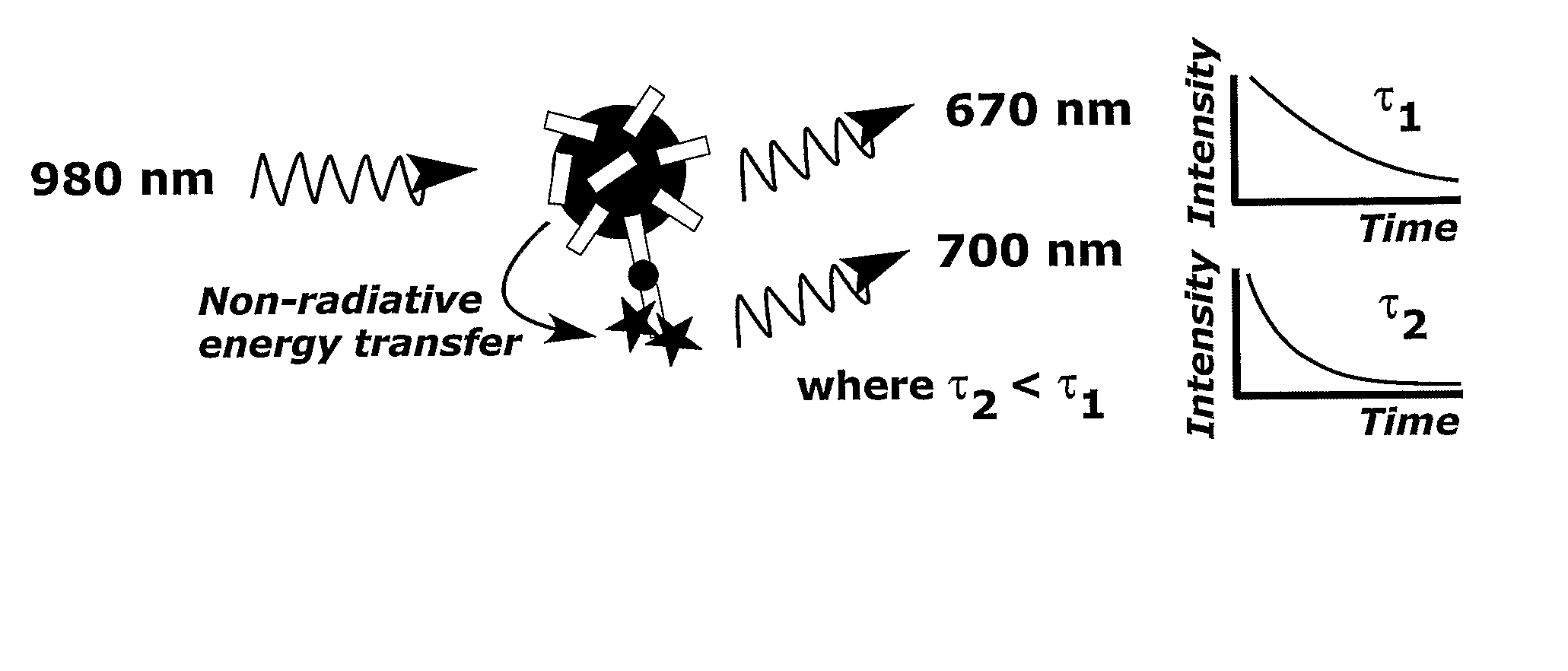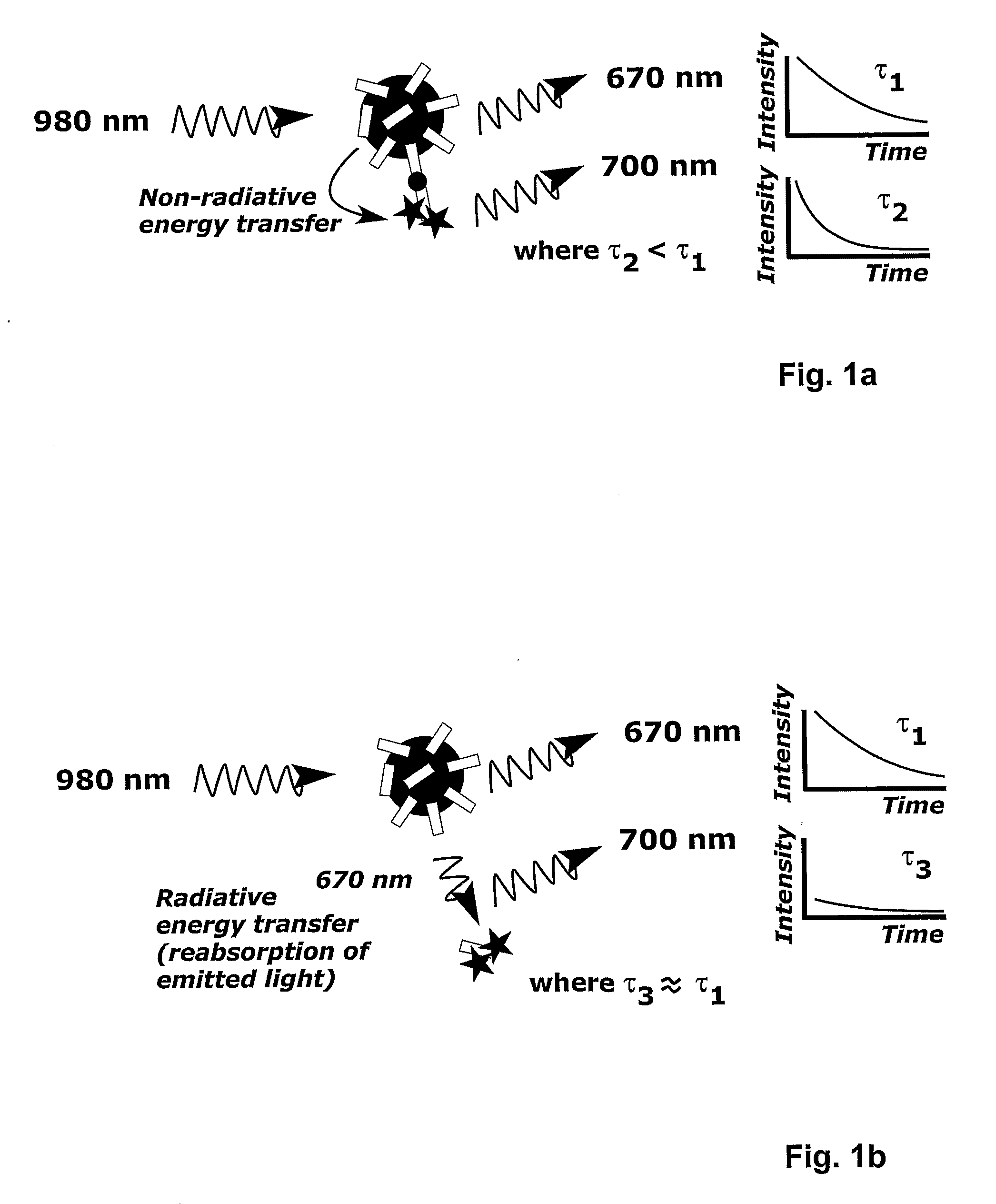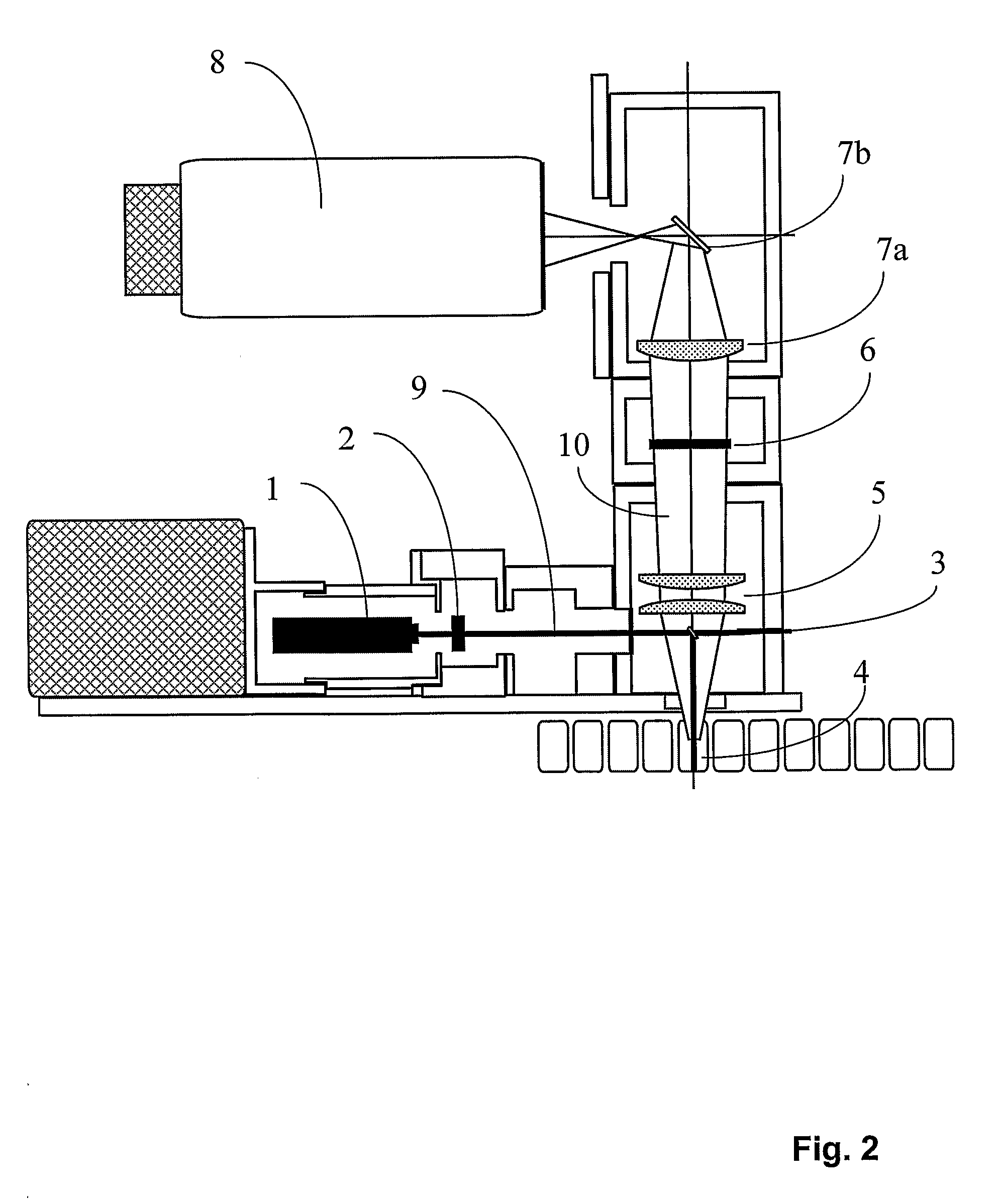Correction Method and Measurement Device For Anti-Stokes Photoluminescence Measurement
a technology of photoluminescence measurement and correction method, which is applied in the field of anti-stokes photoluminescence correction method, can solve the problems of small stokes shift, limited use and sensitivity of traditional fluorescence, and difficulty in detecting the effect of stokes,
- Summary
- Abstract
- Description
- Claims
- Application Information
AI Technical Summary
Benefits of technology
Problems solved by technology
Method used
Image
Examples
Embodiment Construction
[0060]Prior are does not describe correction of the sensitized acceptor emission measured without temporal resolution (i.e. simultaneously with excitation) by using a temporal resolution and a life-time analysis of the delayed sensitized acceptor emission signal (measured with a delay after excitation) to separate emission originating from radiative energy transfer and FRET in the signal measured without temporal resolution. What is not known from prior art is that when anti-Stokes photoluminescent donor is used the measurement of the sensitized acceptor emission can be performed simultaneously with the excitation light pulse. This is possible because the measurement does not need to be delayed to reduce the background, as is the case in time resolved fluorescence. Furthermore with the simultaneous continuous excitation and photon counting the donor can be excited again immediately after the excited state of the donor is relaxed. This has not been disclosed in prior art, but is espe...
PUM
| Property | Measurement | Unit |
|---|---|---|
| time window | aaaaa | aaaaa |
| time | aaaaa | aaaaa |
| time | aaaaa | aaaaa |
Abstract
Description
Claims
Application Information
 Login to View More
Login to View More - R&D
- Intellectual Property
- Life Sciences
- Materials
- Tech Scout
- Unparalleled Data Quality
- Higher Quality Content
- 60% Fewer Hallucinations
Browse by: Latest US Patents, China's latest patents, Technical Efficacy Thesaurus, Application Domain, Technology Topic, Popular Technical Reports.
© 2025 PatSnap. All rights reserved.Legal|Privacy policy|Modern Slavery Act Transparency Statement|Sitemap|About US| Contact US: help@patsnap.com



